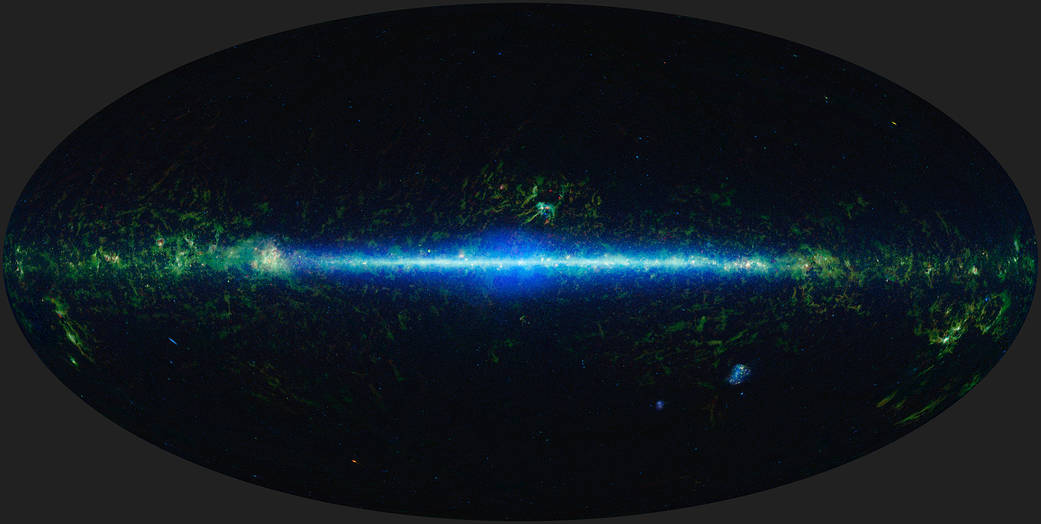This mosaic is composed of images covering the entire sky, taken by the Wide-field Infrared Survey Explorer (WISE) as part of WISE’s 2012 All-Sky Data Release. By observing the entire sky, WISE could search for faint objects, like distant galaxies, or survey groups of cosmic objects. Not visible to the human eye, infrared light is radiated by a plethora of cosmic objects, including cool, nearby stars and some of the most luminous galaxies in the universe.
The WISE mission ended in 2011 after the onboard coolant – needed for some infrared observations – ran out, but the spacecraft and some of its infrared detectors were still functional. So, in 2013, NASA repurposed it to track asteroids and other near-Earth objects, or NEOs. Both the mission and the spacecraft received a new name: NEOWISE.
Image Credit: NASA/JPL-Caltech/UCLA



























